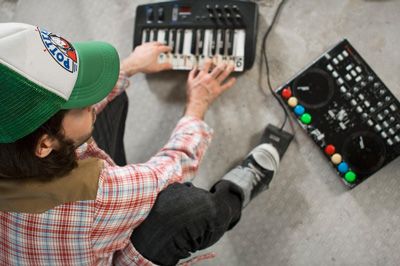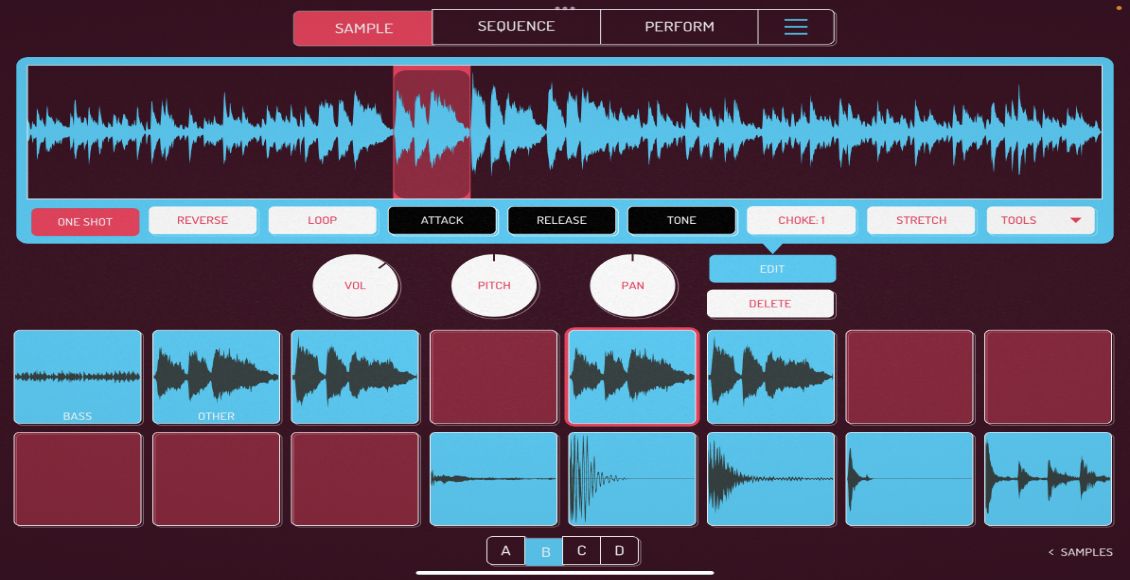The manufacturers don’t want you to know this, but the truth is you don’t have to plop down $1,500 for the latest Allen & Heath mixer or $3,000 on a JazzMutant Lemur to do creative things with MIDI and DJ software. Sure, having a brand new DJ controller with all kinds of bells and whistles will get you excited about trying new ideas, but you might get more mileage out of something at a fraction of those prices. There are many inexpensive two-octave keyboards that offer mappable controls in a small footprint. Perhaps you still have an M-Audio Oxygen 8 ($149.95 for the Oxygen 8 V2; www.m-audio.com) lying around from your first foray into music production. Take it out and imagine how you might DJ with it. Think of how each knob and slider might best control two or more songs on the fly. It’s actually a lot more realistic than you might imagine, so let’s turn the zillion-selling Oxygen 8 into a controllerist’s dream rig.
GET IT STARTED
When I first switched to digital DJing from vinyl 5 years ago, the Oxygen 8 was one of the only portable MIDI controllers that would not break the bank, so I made it work. Surprisingly, it beat out every new option until recently when I upgraded to a customized Vestax VCI-100. The Oxygen 8’s keys handle all pitch bending, tempo adjustments and transport controls for two decks, and the knobs act as dedicated effects controls. An optional footswitch can engage a hidden “controllerist layer” that I’ll detail later. If you have an Oxygen 8 or similar two-octave keyboard, I recommend you get an additional footswitch like the M-Audio SP-1 ($19.95), which will help you wrangle a lot of control out of a small surface area.
I created TKS (Traktor MIDI assignments) and Oxygen 8 settings files that will get everything running appropriately. You can find both at the bottom of this post, but keep in mind that although the files will work with the older Oxygen 8 and most two-octave keyboards — such as the Alesis Photon X25, Behringer UMX25 or the Edirol PCR-M1 — the layout is optimized for use with the Oxygen 8 V2. All of the keys in my layout are split into two sections — left and right — which control the left- and right-hand deck, respectively. Each key is grouped into areas based on logical sequences of actions. For example, the three black keys work together to play a song and grab it like you would a record. The first black key drops a cue; the second goes back to that cue and samples it (Cue-play); and the third plays the song from that temporary cue point. This simple but effective grouping is the first basic controllerist technique you can learn: dropping a cue on the fly and then going back to it with the Play and Pause buttons to “scratch out” the section, extending a break or sampling an appropriate word into the next song. That’s the bread-and-butter technique of many mash-up DJs and turntablists in clubs. Instead of blending long mixes, they just grab the last part of the record and sample it over the intro of a new song.
STAYING IN TIME
Programs such as Native Instruments Traktor very accurately match the tempos of songs for you, so nine times out of 10 only small adjustments are needed to keep songs perfectly in sync. A group of four tactile and responsive white Oxygen 8 keys effectively handle tempo down, tempo up, pitch down and pitch up, in that order. Because the keys are next to each other, you can easily bend the pitch and tempo at the same time — like a turntable’s pitch fader, but with more accuracy. The technique does take some getting used to if you learned on turntables, but for house, hip-hop or any fixed-tempo genre, the keys work surprisingly well.
JUGGLE IT
The easiest way to jump into controllerism is to experiment with cue-point juggling. Cue juggling differs from the turntablist’s standard, beat juggling, because you are jumping between different points within a song. That can be done with two different songs or two copies of the same song, depending on the routine.
The key is to consistently place your cue points so that they make sense to your brain and are easy to work with on the fly. I often place five cue points on every song in a consistent manner so each cue is placed on a different hit or sound that I would like to sample in a logical progression through the track. The first cue point always goes on the first down beat — usually a kick. And if the software supports it, I always make this cue a “load marker,” so the song always starts at the right spot. Then the next cue is always placed on the second hit — usually a snare or similar sound — so my kick and snare are always right next to each other for freestyle drumming. The third cue is always placed on a cymbal, hi-hat or sound with a long tail, and the fourth always goes on a fill. Finally, the fifth cue goes on the downbeat of the first major part of the song. Not only does this fifth cue provide me with a visual reference of when I need to be finished mixing, but it’s also usually a good spot for beat juggling with two copies of the same song. I set up my VCI-100 so the jog wheels always trigger that last cue. Then with two copies of the same song loaded, I can juggle between them using the crossfader and the jog wheels as triggers. It looks and feels just like juggling two records but with more control — a classic example of effective controllerism. Those five cues are played in the Oxygen 8 layout by engaging the footswitch, which turns the five black keys into direct cue-point triggers for each deck.
Controllerism can be a lot of fun if you set up your gear correctly, so use a controller that is simple to understand and fun to use. There are many options out there, but I encourage you to think for yourself and use these ideas as a jumping-off point to develop your own signature way of working with music.
DOWNLOAD THE FILES
Take note to look at the Read me file. Remember that your keyboard needs to be at the neutral or the middle octave point otherwise the keys wont work. I will post a video next week on how everything works but in the mean time try every control out and find out how they are mapped. I recommend putting stickers on there for clarity! This will work with all Oxygen 8 and 2 octave keyboards but the effects selection and direct mapping of the knobs and buttons will only work on the oxy8 V2.










